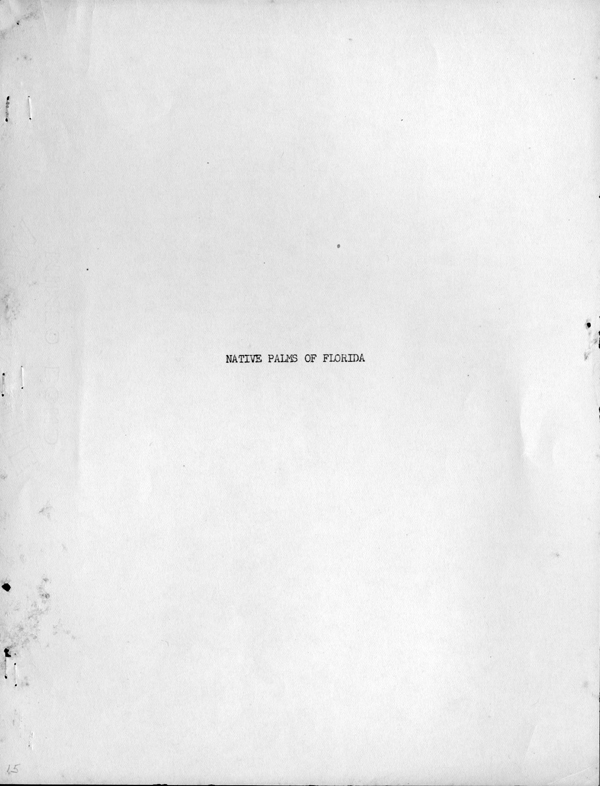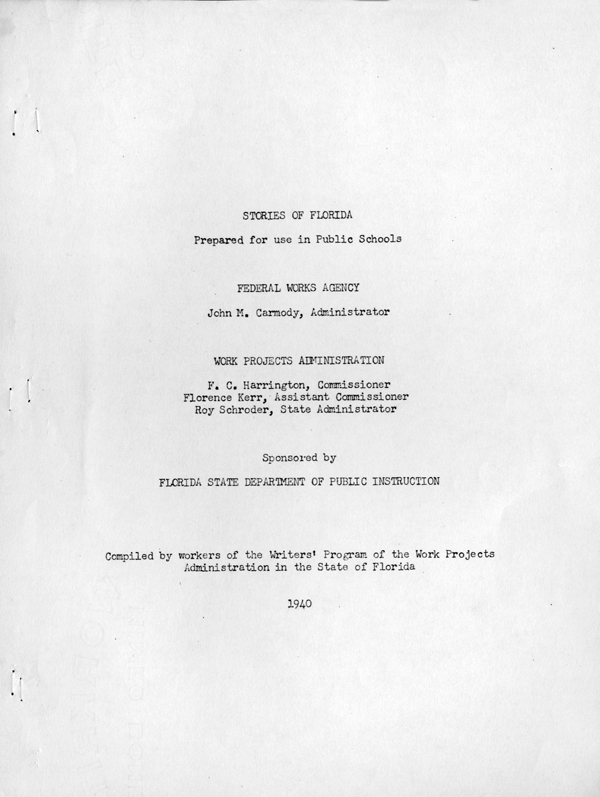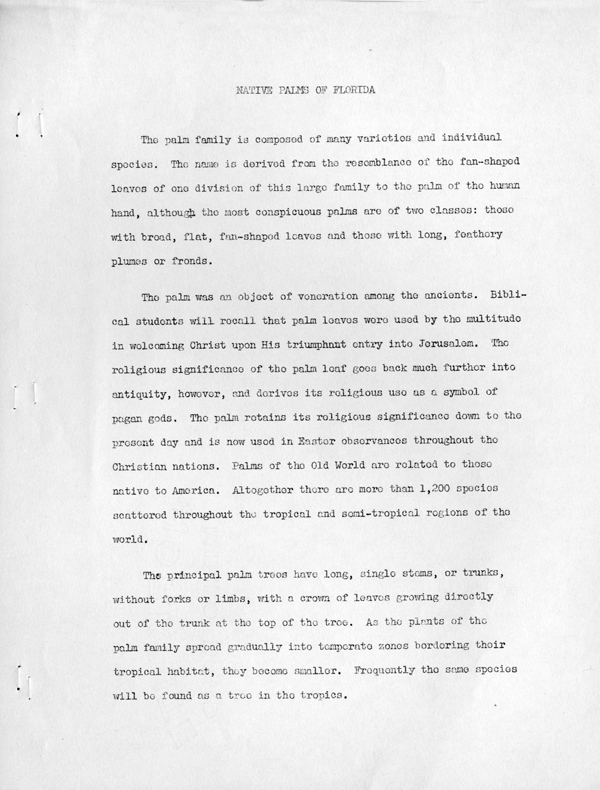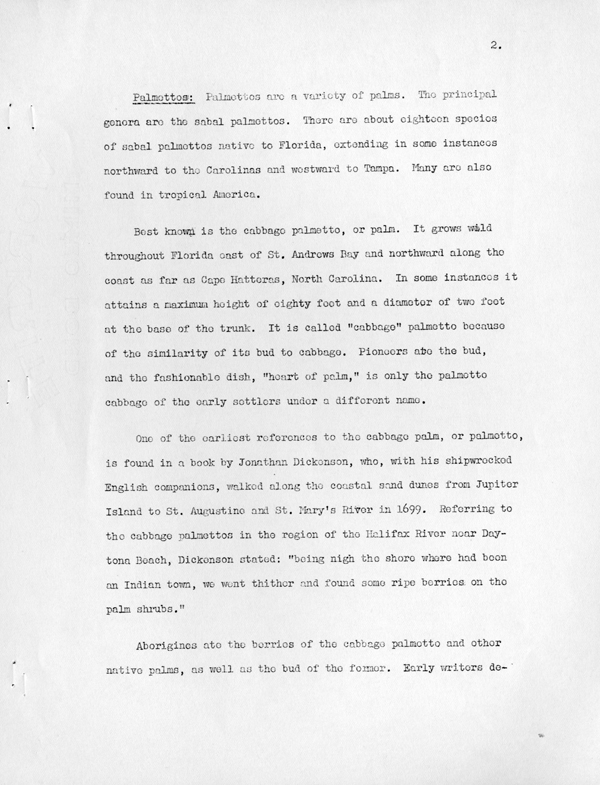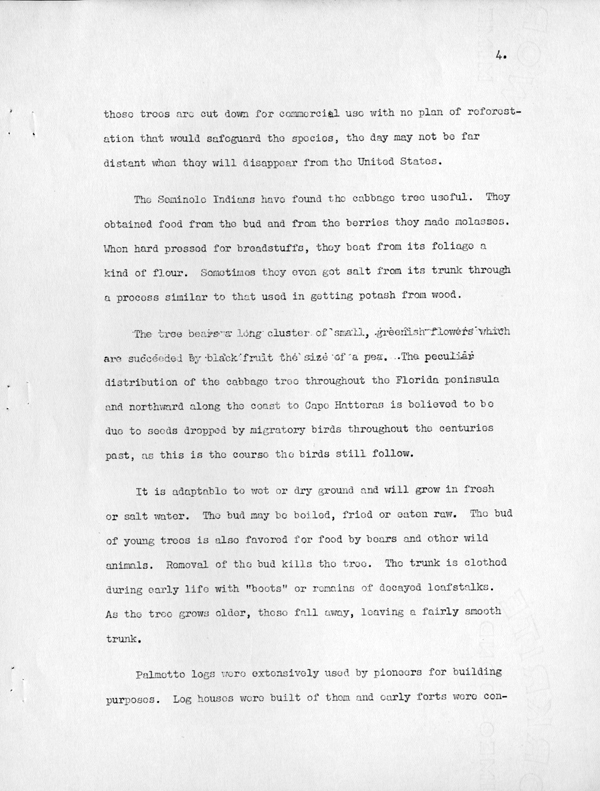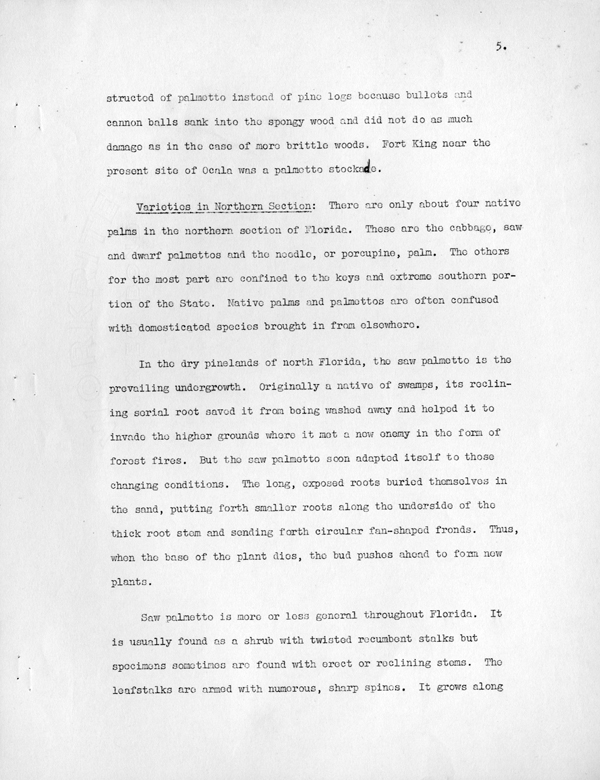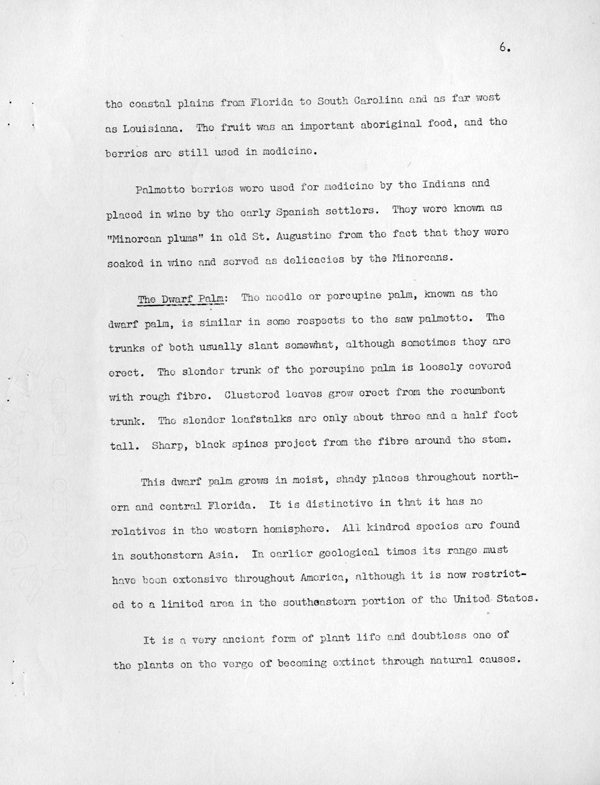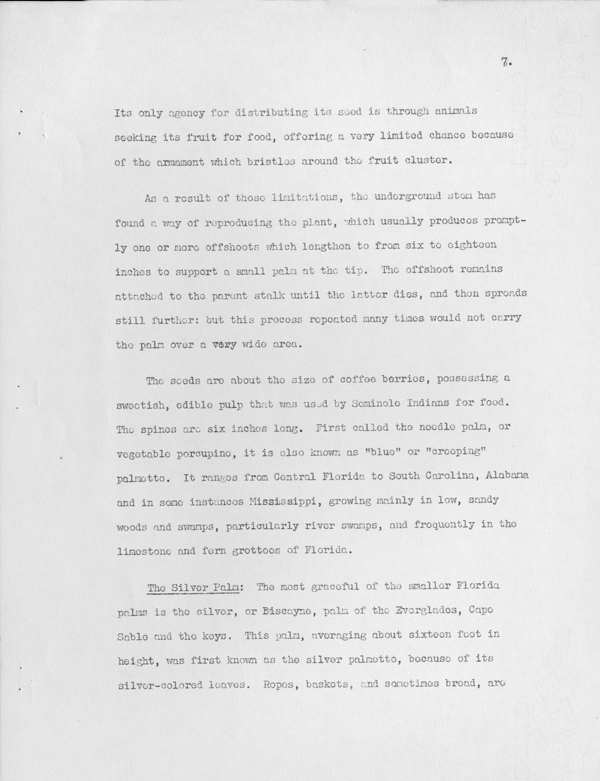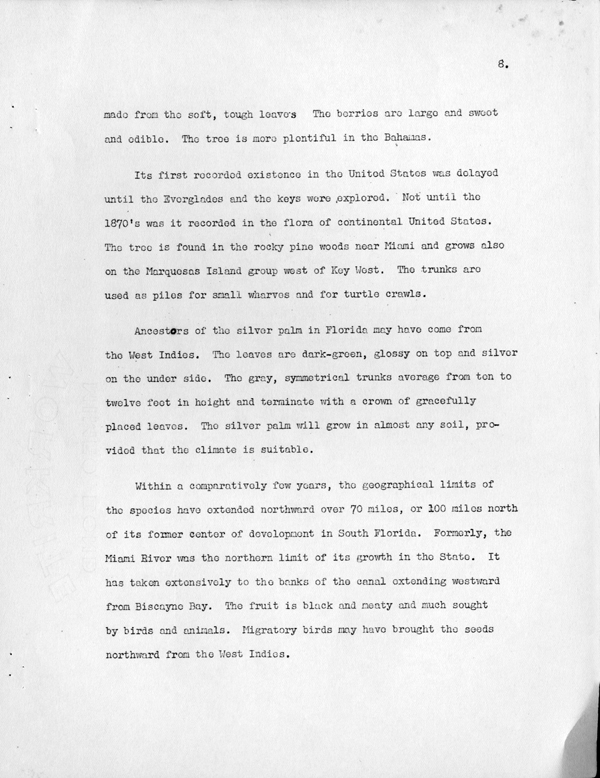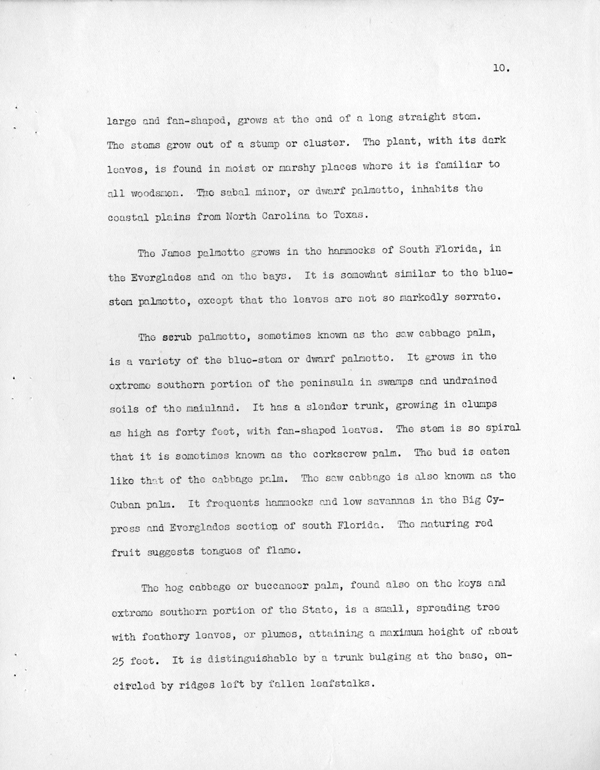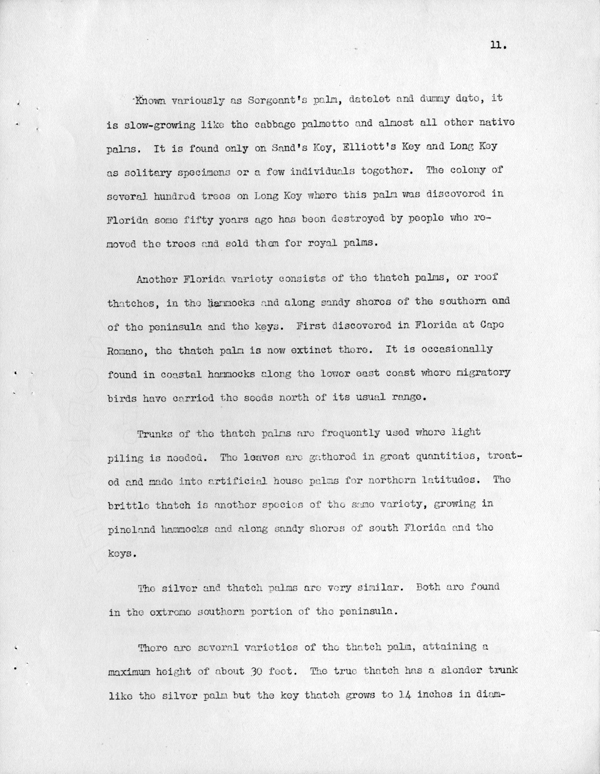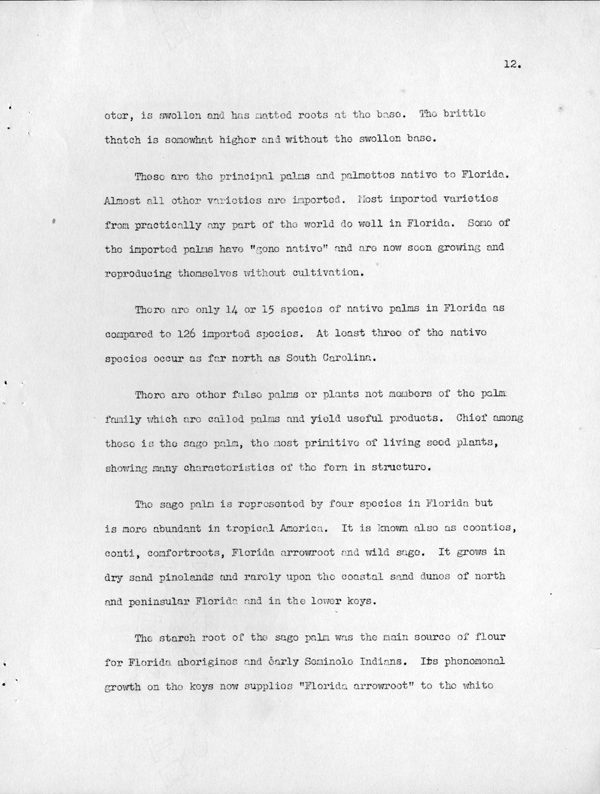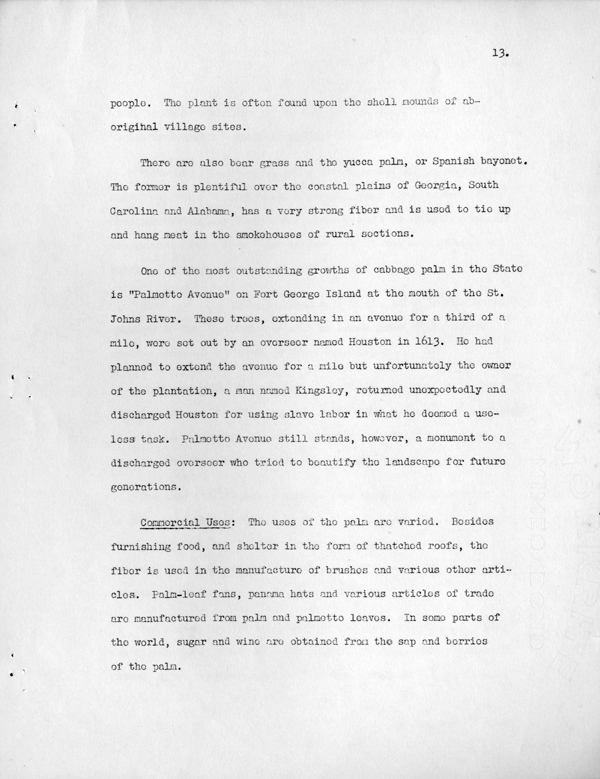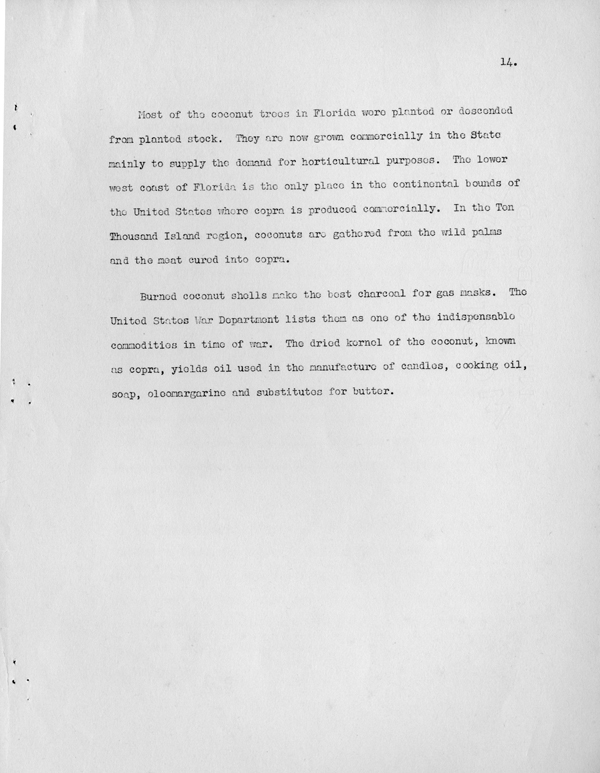Florida Memory is administered by the Florida Department of State, Division of Library and Information Services, Bureau of Archives and Records Management. The digitized records on Florida Memory come from the collections of the State Archives of Florida and the special collections of the State Library of Florida.

State Archives of Florida
- ArchivesFlorida.com
- State Archives Online Catalog
- ArchivesFlorida.com
- ArchivesFlorida.com
State Library of Florida
Related Sites
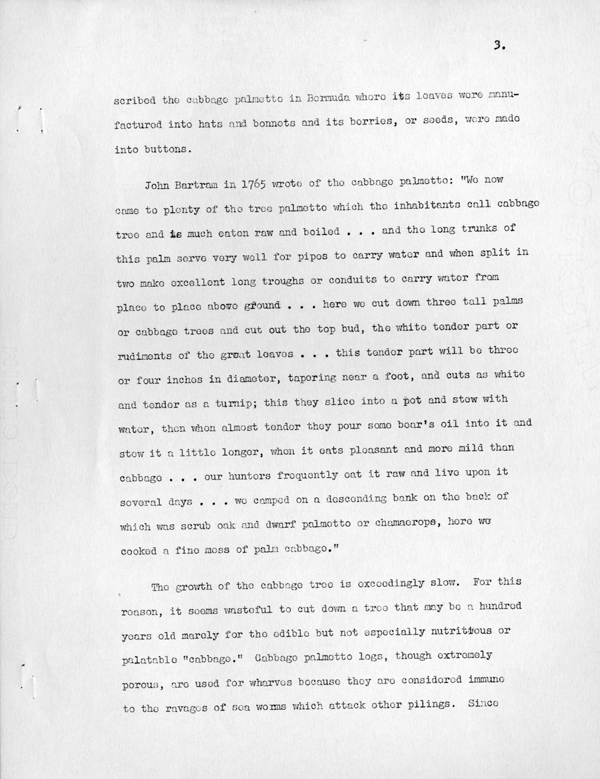
Description of previous item
Description of next item

Title
Published Date
[page 3]
scribed the cabbage palmetto in Bermuda where its leaves were manufactured
into hats and bonnets and its berries, or seeds, were made into buttons.
John Bartram in 1765 wrote of the cabbage palmetto: "We now came
to plenty of the tree palmetto which the inhabitants call cabbage tree and is
much eaten raw and boiled . . . and the long trunks of this palm serve very
well for pipes to carry water and when split in two make excellent long
troughs or conduits to carry water from place to place above ground . . . here
we cut down three tall palms or cabbage trees and cut out the top bud, the
white tender part or rudiments of the great leaves . . . this tender part will be
three or four inches in diameter, tapering near a foot, and cuts as white and
tender as a turnip; this they splice into a pot and stew with water, then when
almost tender they pour some bear's oil into it and stew it a little longer,
when it eats pleasant and more mild than cabbage . . . our hunters frequently
eat it raw and live upon it several days . . . we camped on a descending bank
on the back of which was scrub oak and dwarf palmetto or chamacrops, here
we cooked a fine moss of palm cabbage."
The growth of the cabbage tree is exceedingly slow. For this reason, it
seems wasteful to cut down a tree that may be a hundred years old merely for the
edible but not especially nutritious or palatable "cabbage." Cabbage palmetto
logs, though extremely porous, are used for wharves because they are considered
immune to the ravages of sea worms which attack other pilings. Since
Title
Subject
Description
Source
Date
Contributor
Format
Language
Type
Identifier
Published Date
Image URL
Thumbnail
Transcript Path
Image Path
Image Path - Large
Chicago Manual of Style
Native Palms of Florida. 1940. State Archives of Florida, Florida Memory. <https://www.floridamemory.com/items/show/181527>, accessed 13 December 2025.
MLA
Native Palms of Florida. 1940. State Archives of Florida, Florida Memory. Accessed 13 Dec. 2025.<https://www.floridamemory.com/items/show/181527>
AP Style Photo Citation

 Listen: The Folk Program
Listen: The Folk Program